The Royal Maundy: the History of the Precious Silver Coins of British Faith & Tradition
By Robert Lewis Knecht & April A Knecht
A new commandment I give unto you, That ye love one another; as I have loved you, that ye also love one another. By this shall all men know that ye are my disciples, if ye have love one to another. John 13: 34-35
What is Maundy Thursday... and who celebrates it?
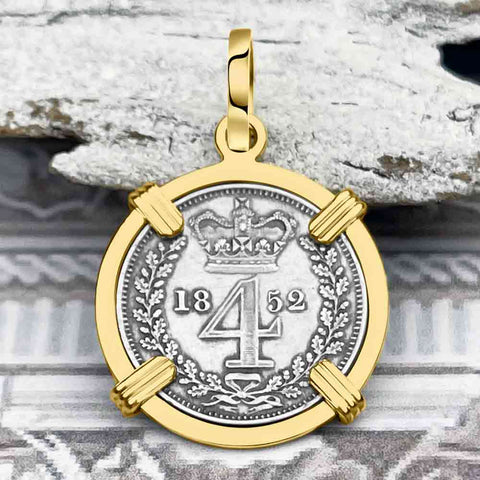
Maundy Thursday – or Holy or Good Thursday – falls each year on the day before Good Friday. Recognized throughout the Christian world, it commemorates the night before the crucifixion of Christ, when he gathered his disciples together for the Last Supper and the establishment of the Eucharist.
The History of Maundy Thursday, and Why It's Called "Maundy"
But where does today’s Maundy Thursday come from? As far back as 597 AD Saint Augustine refers to the day… but the origin of Maundy Thursday traces right back to that very night Christ gathered his disciples… and gave them the Novum Mandatum – Latin for New Mandate, or as we say, New Commandment.
And that New Commandment? Love one another as I have loved you.
But before that command was given, Christ washed the feet of each of the disciples. It is through this act of love and service, and spiritual purification, that Christ prepared his disciples for the New Commandment – the call to service and love of each other and their fellow men.
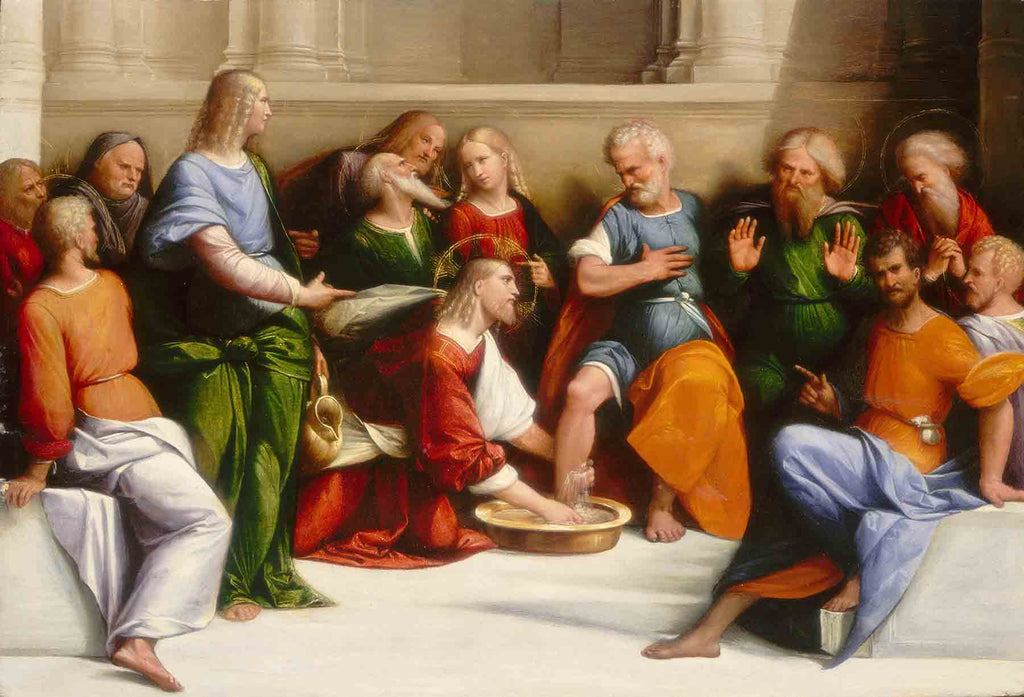
So from St. Augustine’s day to the present, Christians have gathered for ceremonial foot washing on Maundy Thursday – but it is the British tradition that has led to some of the most treasured of Maundy offerings… the silver coins known the world over as “Maundy Money.”
Browse our extensive collection of British Maundy Money and British Treasure Coin jewelry here>>>
Royal Maundy Thursday At a Glance:
- Who: The reigning British monarch and specially chosen recipients
- What: A ceremony where at first, the poor were given food, clothing and other items, and later silver coins. Now, specially chosen service volunteers are honored each Maundy Thursday.
- When: Since the 4th Century, with King John (1199-1213) being the first to distribute silver coins
- Where: For centuries, the Royal Maundy service was held in London – and was held in Westminster Abbey for 60 years. Now, it is held in a different city each year.
-
Why: To demonstrate that like Christ, it is the monarch’s solemn duty to serve and love their subjects (since 1949, citizens).
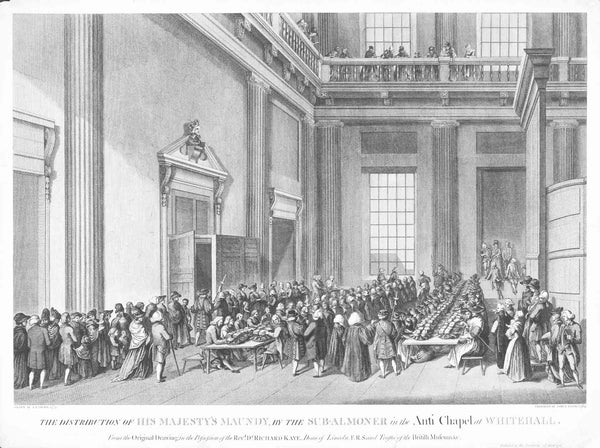
What is Maundy Money... and How Did It Get Started?
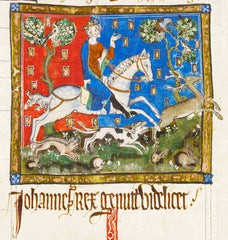
While King John distributed the silver coins of the realm on that Maundy Thursday centuries ago, over the centuries Maundy Money has transformed into specially minted coin sets that are as prized as they are symbolic and beautiful.

And while the coins have changed over time, the Royal Maundy ceremony still starts with: A new commandment I give unto you, That ye love one another; as I have loved you, that ye also love one another. By this shall all men know that ye are my disciples, if ye have love one to another.
The British Royal Maundy: How Maundy Money Coin Sets Came To Be
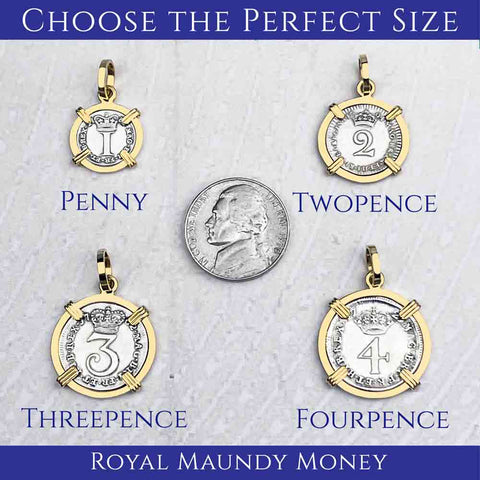
“Maundy Money” denomination sets today are four sterling silver coins, all struck with the same date: fourpence, threepence, twopence and penny, which equals 10 pence. Coins given during a Maundy celebration are given in two sets, and in two pouches, one red, and one white. But, as with most things, that’s not the way it started.
Browse our extensive collection of British Maundy Money and British Treasure Coin jewelry here>>>
The First Maundy Money
As you now know, the Maundy ceremony can be traced back to Christ and the Last Supper. In England, the practice of giving food, clothing and other items dates to the 4th century. King John (1199-1213) is the first to give small silver coins in a red pouch along with gifts of clothing, food and other items in 1213.
Medieval Maundy Money
During Medieval times, the penny and groat (fourpence) were given. As the money was meant to be used by those who received it, there was no special mint run of coins at that time.
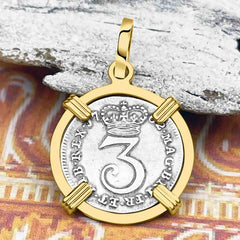
While it is not known if this practice began earlier, in 1363, 50-year-old King Edward III, gave 50 pence to 50 poor men. But it wasn’t until Edward’s grandson, Henry IV made it official, that the number of pence - and recipients - matched the monarch’s age. That tradition continues today.
Tudor Through Today's Maundy Money
The Tudors (of Henry VIII and his six wives fame) introduced the custom of the monarch giving their Maundy robe to the poorest of the Maundy Thursday recipients along with the silver pennies. But as recipients were very poor, one can imagine the squabbles that ensued at the church over this special piece of clothing. Being of sound mind and an astute problem solver, Queen Elizabeth I put a stop to this tradition in 1572, and instead gave 20 shillings (equal to 1£) in substitute for the robe… and this was a lot of money back then. Of course, a second purse was required. So the red purse was used for the silver shillings, and a white purse now held the Maundy pennies.
The “Maundy Money” denominations known today (1d, 2d, 3d and 4d) were started during the reign of Charles II (1660-1685). While the four denominations were also struck for regular circulation, undated sets of 4 coins were struck starting in 1662. Then dates were added in 1670.
Browse our extensive collection of British Maundy Money and British Treasure Coin jewelry here>>>
When did specially minted Maundy Money sets come to be?

Prior to 1752, coins used for the Maundy ceremony were also used in general circulation. After 1752, special coins not meant for circulation were struck for the Maundy ceremony.
While the Royal Maundy ceremony was held annually, Maundy sets were not always struck each year. During the years when the mint wasn’t striking silver coinage, previous year’s pieces were used.
What do the designs on Maundy Money mean?
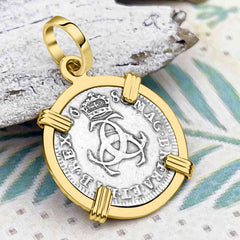
During the reign of Charles II, the way to tell the denomination was by the amount of C’s that were on the reverse (non-portrait side) of the coins. One penny had one C, threepence (“thrupence”) had 3 inter-linked C’s etc. This style continued for 26 years, until James II changed the “C” in 1688 to Roman numerals utilizing only the letter “I.”
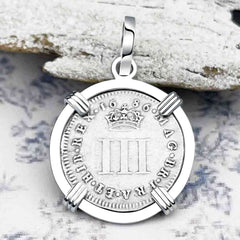
In 1689, during the reign of William and Mary, the Royal Mint started using the crown over a numeral. The design changed several times after that but always incorporated the numeral standard.
Eventually, the oak wreath was added to compliment the crown and numerals. Slight modifications to the crown were made in 1888, but since then no changes have been made. It is the longest continuous coin series in British history.
Who receives Maundy Money... and why?
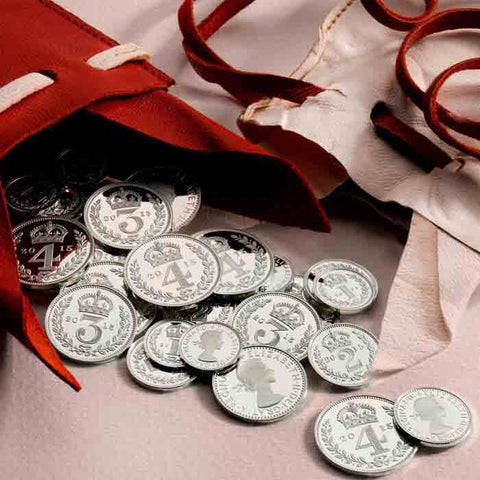
Maundy coins are precious… they are minted by command of the monarch, and no other coins have such a direct connection to the reigning king or queen. Now distributed to those who exemplify love through service, they are given to men and women who have lived a life of devotion to service and church causes and charities. The coin you now hold in your hand has a storied history… and now it continues its journey with you, as a shining testament to faith and tradition.
Browse our extensive collection of British Maundy Money and British Treasure Coin jewelry here>>>
FUN FACT: So what is the small “d” next to the denomination for a “pence” or British penny coin?
Today, like the U.S. monetary system, there is the pound (£), and the penny (d). One hundred pennies equals one pound, just like 100 cents equals one dollar.
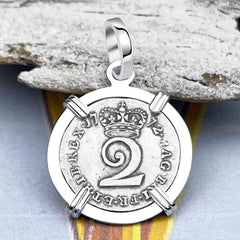
But denominations in Britain weren’t always that easy. Prior to 1971, the U.K.’s currency was not decimal based… and it was pretty complex. So complex that we won’t get into it here. However, we will explain where the potentially confusing symbols come from.
Today, the there are only two “columns” so to speak. Dollars and cents, or pounds and pennies. Pre-1971, the U.K. Had three columns: pounds (£), shillings (s) and pennies (d). Whah?

So let’s step back in time... to Roman times. English is a new language compared to Latin, which has been around for about 2700 years.
The “L” for the British £ sign comes from the Latin Libra which means a pound of money. The use of it for the British pound dates to 1661. The “s” for shilling comes from the Latin solidus, which is a Roman gold coin. And the “d” comes from the Roman denarius, a Roman silver coin. The abbreviations for shillings and pence are first found in the Oxford English Dictionary in 1387, when Latin and English were in constant use. In fact, Latin is still used on British and U.S. Currency... as you’ve already seen, so much for Latin being a “dead language.”
Browse our extensive collection of British Maundy Money and British Treasure Coin jewelry here>>>
www.CannonBeachTreasure.com ©Cannon Beach Treasure Company. Copying any part of this document in any form is a violation of U.S. copyright law. Cannon Beach Treasure Company strictly enforces any violations.



















Leave a comment (all fields required)